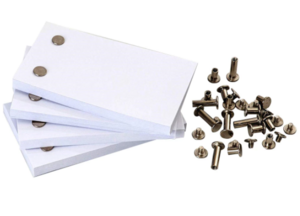Duujo
United Kingdom of Duujo Duujo | |
|---|---|
|
Flag | |
| Capital and largest city | Danaba |
| Official languages |
|
| Ethnic groups (2021 census) |
|
| Religion (2021 census) | Qosa
|
| Demonym(s) | Duujo |
| Government | Unitary Parliamentary Constitutional Monarchy |
• Captain | Katida Lilana (Katida Lilana) |
• Qesa | Jekaba Qesa |
| Legislature | TBD |
| Formation | |
• Founding (Qosa) | 24 |
• Split (Venka & Luksa) | 322 |
• Reunification (Duujo) | 1759 |
| Area | |
• Total | 84,383 km2 (32,580 sq mi) (unranked) |
| Population | |
• 2021 census | 1,770,000 (X) |
• Density | 21/km2 (54.4/sq mi) |
| GDP (PPP) | 2020 estimate |
• Total | 14,160,000,000 (not ranked) |
• Per capita | 8000 (not ranked) |
| HDI (2021) | 0.720 high |
| Currency | Duujo Duilo (D) (DUD) |
| Time zone | UTC-11:00 (DST (Duujo Standard Time)) |
| Driving side | left |
| Calling code | +993 |
| Internet TLD | .Do |
Etymology
The name "Duujo" derives from the Qosa words "You and me" or "Do u jo". The name was first used in the 1740s in the islands between Venka and Luksa; where the calls for unification were strong. This name was used because it tells a story of unity between opposing sides working together. The name was later used in the independence of those islands in 1749, where they declared themselves "The Republic of Duujo". It was used in 1759 too for "The United Kingdom of Duujo", where all of the Qosa archipelago united into one country.
History
Ancient History
Before Qosa
~-23
Founding Of The Kingdom Of Qosa
24
The Twin Prince Revolt
322
The Two Kingdoms
322
Middle Ages
The Luksa Invasion
356
The Kingdom Of Luksa
357
Venka Revolt
447
Founding Of The Republic Of Venka
448
The Wars Of The Middle
TBD
Modern Age
The Republic Of Duujo
1751
Unification Of Duujo
1759
Geography
TBD
Climate
TBD
Politics and foreign relations
TBD
Foreign Affairs and defence
TBD
Administrative subdivisions
TBD
Demographics
Religion
Economy
Infrastructure
TBD
Culture
TBD
Clothing
TBD
Cuisine
TBD
Music
In Duujo, music is a very popular form of art. The first musical instrument discovered in Duujo was a flute, dating back to over 300bc, but the first musical instrument invented in Duujo was the Suka, an instrument similar to a regular wooden pan flute, which has symbolic patterns and symbols adorned on it, which was invented around the time of Qesa and the unification. An example of the use of The pan flute in Duujo music is in the national anthem, "Sun, Moon and Stars," where it is used for the main melody. A lot of traditional songs from Duujo are accompanied by dances, which tell a story in combination with that song. Most songs around those eras were religious in nature; being about the stars above and the many people in Duujo folklore. In the late 18th century, Duujo experienced a musical evolution of sorts, with the introduction of the guitar from foreign powers.
Nowadays, the guitar is the most popular instrument in Duujo, being used in many different genres. D-pop(Duujo Pop) has been growing in popularity rapidly recently in the younger generations. It is usually a combination of global pop, with emphasis on traditional Duujo elements such as guitars and wind instruments such as the pan flute. Foreign music can also be heard a lot in urban areas of the country, where cultural and ethnic groups combine due to tourism.
Literature
TBD
Art
Art in Duujo has existed for a long time, the first recorded being a person looking at a toucan, painted on a cave wall. Over the years, art in Duujo has evolved significantly. Starting in the 4th century, people started indulging in a style of art known in Duujo as Kuba, or Silent Comics. These works of art would often tell a story of folklore and myths or one that actually happened. It has been difficult for historians to tell which pieces of art represent real life and which represent a fantasy story due to how fantastical and whimsical the illustrators made the events look.
Another popular art form in Duujo is the Hubanarara (translation literally to book move), also known as a flipbook. First invented in 1597, Hubanararova have been used to display short scenes of action or different pieces of art together. One may gift a homemade Hubanarara to a member of their family or a friend as a present. Hubanarara making has become easier now due to better access to thinner paper and safe light sources, as well as the medium of digital art and printers, compared to previous where you would draw the same image over and over with varying levels of accuracy. This has made them able to be produced for commercial purposes. Modern Hubanarara often tell stories in small parts, with more of them also being able to be bought. The most popular series of Hubanarara flipbooks is called "People Versus", which depicts popular figures in current Duujo culture fighting in silly, and often comical ways. It has had quite a few legal run-ins, but it is still continuing with popular support.
Sports
TBD
Performing Arts
TBD
Holidays
TBD
See also
References
Further reading
External links


